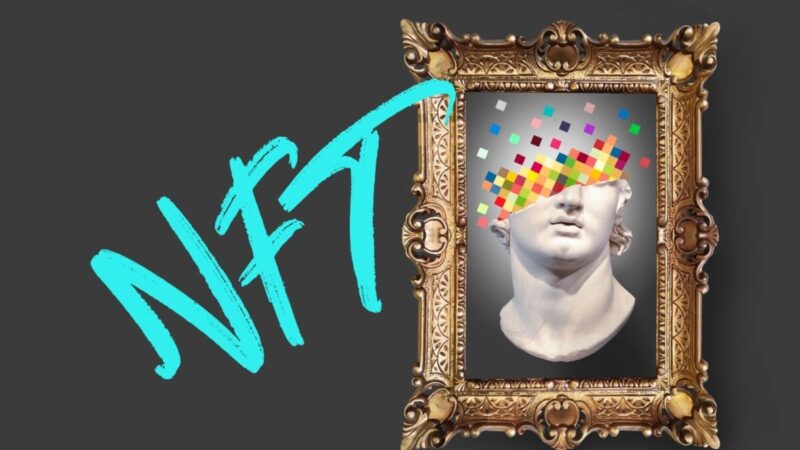Entertainment
London Art Scene Embraces NFT Exhibitions and Digital Galleries

The London art world is entering a bold new era as digital galleries and NFT-based exhibitions transform how art is created, owned, and experienced. What began as a niche experiment within the crypto community has grown into a serious cultural movement embraced by artists, collectors, and major institutions. Across the city, galleries are showcasing tokenised art, immersive installations, and digital collectibles that merge technology with human creativity.
This transformation is reshaping how people engage with art. For artists, it opens new ways to reach global audiences without relying on intermediaries. For collectors, it provides verifiable ownership and authenticity using blockchain technology. For visitors, it creates a new type of participation where viewing, purchasing, and sharing art take place both in physical galleries and digital spaces. London’s unique mix of creativity, finance, and technological innovation has positioned it as one of the most active hubs for this emerging art form.
Digital Galleries Redefining Access and Experience
Across the capital, galleries are reinventing how art is displayed and sold. Many have added NFT and digital art sections that showcase works on high-resolution screens and interactive displays. Visitors can explore generative artworks, video installations, and digital sculptures that respond to sound, light, or audience movement. This type of interactivity has brought a new sense of engagement to London’s exhibition spaces.
Traditional art galleries are also adapting. Some have begun offering hybrid exhibitions that combine physical works with blockchain-verified digital versions known as digital twins. This model allows collectors to own both a tangible painting or sculpture and a digital version stored securely on the blockchain. These pieces can then be exhibited in metaverse galleries or shared on digital displays at home, blending the traditional and modern worlds of art.
The accessibility of these spaces has also improved. Virtual tours, online auctions, and livestreamed openings now make it possible for global audiences to participate in London’s art scene. Many institutions are creating digital archives so visitors can explore entire exhibitions remotely. This new accessibility aligns with London’s cultural mission of inclusivity and artistic openness, allowing anyone with an internet connection to enjoy and even purchase contemporary art.
The Role of Technology, Artists, and Collectors
Technology is at the heart of this creative revolution. Blockchain technology allows artists to register their works securely, preventing duplication and ensuring authenticity. Smart contracts embedded within NFTs automatically distribute royalties each time an artwork changes hands, ensuring fair compensation for creators. This innovation is changing how artists think about ownership and long-term value.
For collectors, NFTs have created an entirely new market. Instead of owning a single canvas, buyers can now hold a digital token that represents a verified artwork. Some collectors see this as a diversification strategy, while others are motivated by the appeal of supporting digital artists directly. Auction houses in London have begun experimenting with NFT sales alongside traditional auctions, recognising that digital art is here to stay.
Technology has also inspired a new generation of artists. Creators are experimenting with generative coding, 3D animation, and interactive projection mapping to produce art that evolves over time. London’s art schools and creative labs are incorporating blockchain literacy and digital design courses into their curricula, preparing emerging artists to navigate this changing landscape.
Challenges and Cultural Shifts
Despite its momentum, digital art faces challenges that traditional art forms did not encounter. Environmental concerns over blockchain energy consumption have prompted artists and curators to explore eco-friendly alternatives and more efficient networks. Another challenge is accessibility; not all audiences are familiar with digital wallets, cryptocurrencies, or the technicalities of owning NFTs. To address this, galleries are hosting educational events and artist-led workshops to help visitors understand digital ownership and art preservation.
Cultural acceptance remains another hurdle. Some critics worry that the financial speculation around NFTs overshadows the artistic value of the work itself. However, London’s curators are actively responding by developing thoughtful exhibitions that focus on meaning, craftsmanship, and cultural commentary rather than just market hype. This approach helps establish digital art as an extension of fine art rather than a passing trend.
There is also the question of longevity. How will digital art be preserved for future generations? Institutions are collaborating with technology experts to develop digital archiving solutions that ensure these artworks remain accessible even as software and formats evolve. This ongoing conversation demonstrates London’s commitment to balancing innovation with preservation and authenticity.
Conclusion
London’s embrace of NFT exhibitions and digital galleries marks a defining moment in the evolution of contemporary art. By merging creativity with technology, the city is fostering a cultural environment that encourages innovation while remaining grounded in artistic integrity. The capital’s forward-thinking galleries, artists, and collectors are proving that digital art is not a replacement for traditional creativity but an expansion of it. As these two worlds continue to merge, London stands at the forefront of a global artistic revolution that is reshaping how people create, own, and experience art.








